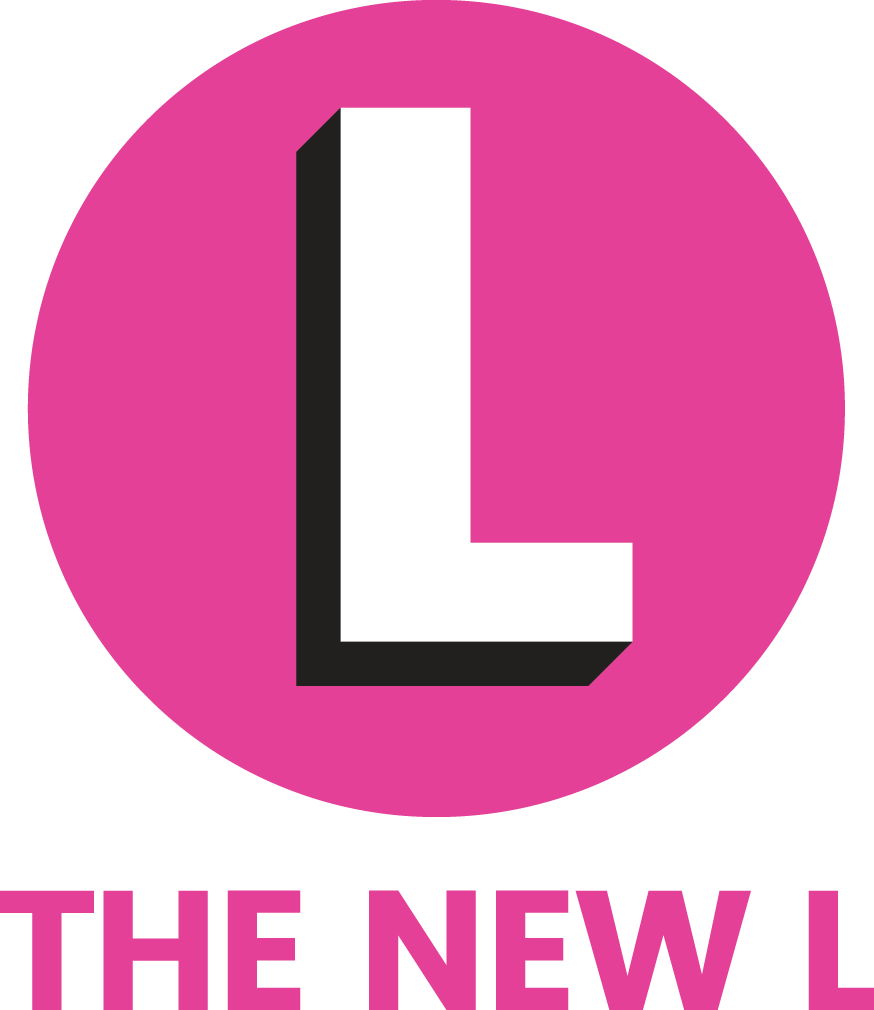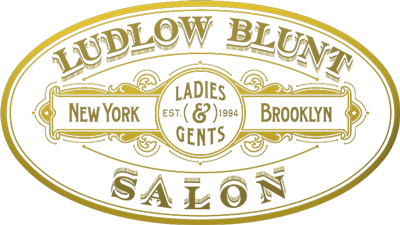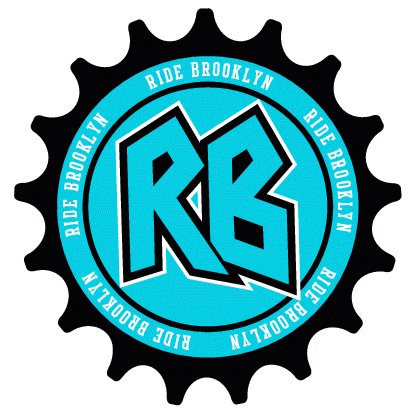
Overview
Currently over 225,000 people use the L Train every day to commute across the East River. Many are concerned that in spite of solutions proposed by the MTA, commuting between Brooklyn and Manhattan will be a significant challenge. Economic loss has been estimated at over $500M, with additional commuting hours estimated at 35+ million.
L-Ternative Bridge® would provide a temporary solution for rapidly transporting people between Brooklyn and Manhattan while the L Train is under repair. It would be capable of supporting two lanes for bus traffic and two walking/bike paths. Construction can be completed in 5 months for an estimated $60M.
We have provided the city with a detailed and actionable plan that includes bids on all material and labor costs. We have conducted impact analysis on east river maritime traffic and have met with the Coast Guard to discuss approval of our design in accordance with the General Bridge Act of 1946. Ideally the MTA will implement our plans and contractor recommendations to build L-Ternative Bridge, or will establish a public-private partnership with a developer.
Why a pontoon bridge?
Pontoon bridges have been used for thousands of years and are still commonly used by the military as a means of rapidly transporting heavy vehicles and cargo across waterways. They are quick to assemble, affordable, and capable of carrying large loads.
Bridge Design

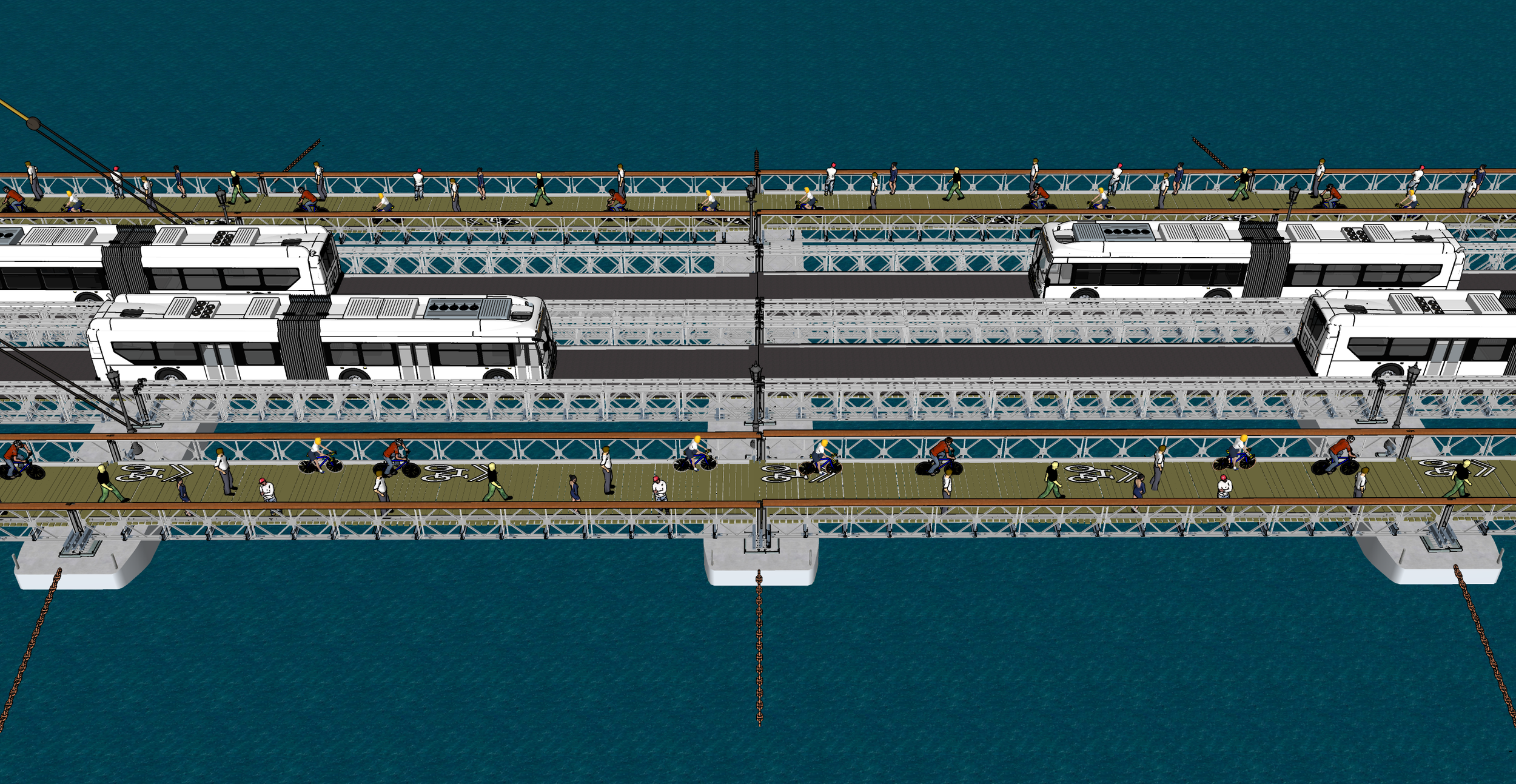
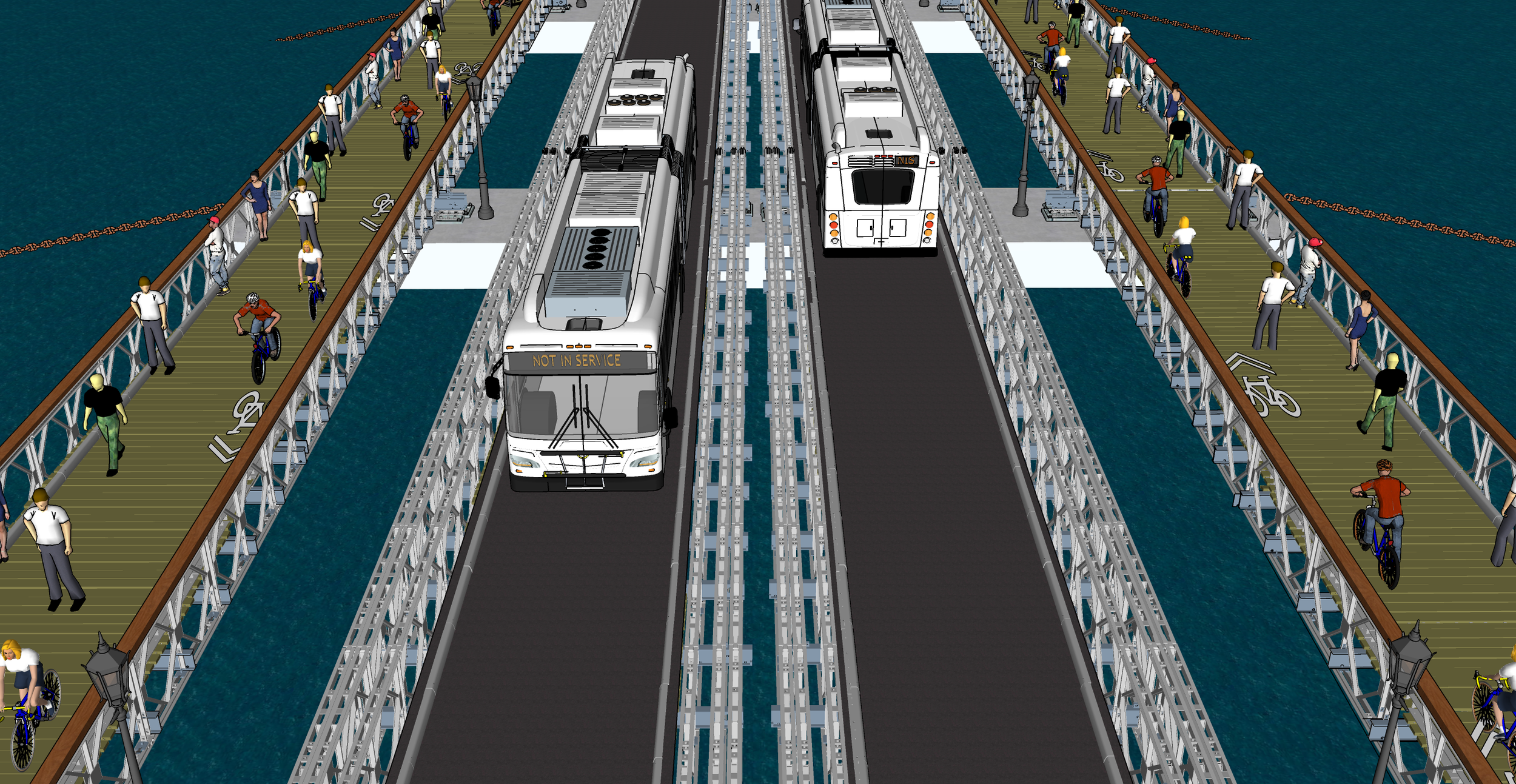
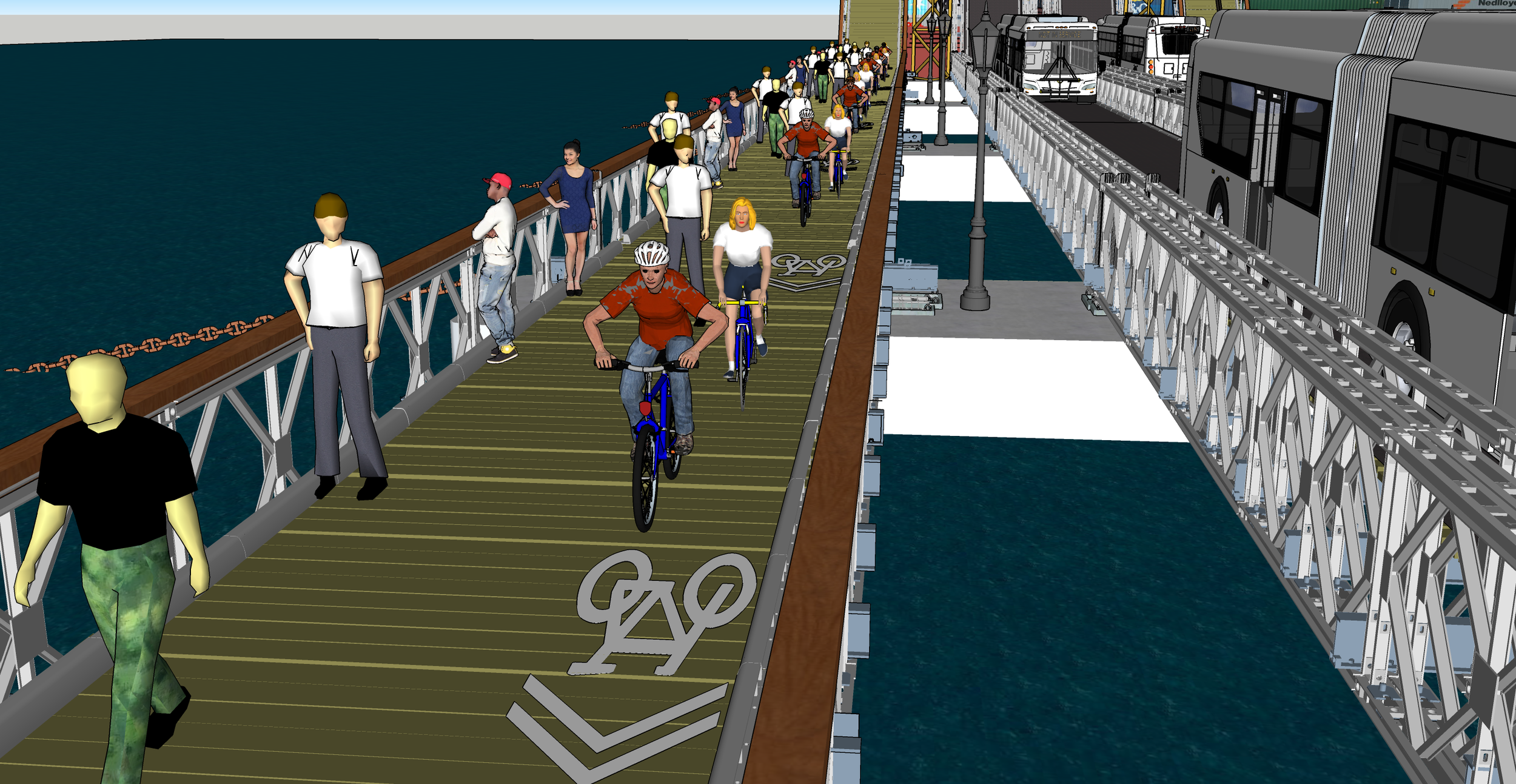
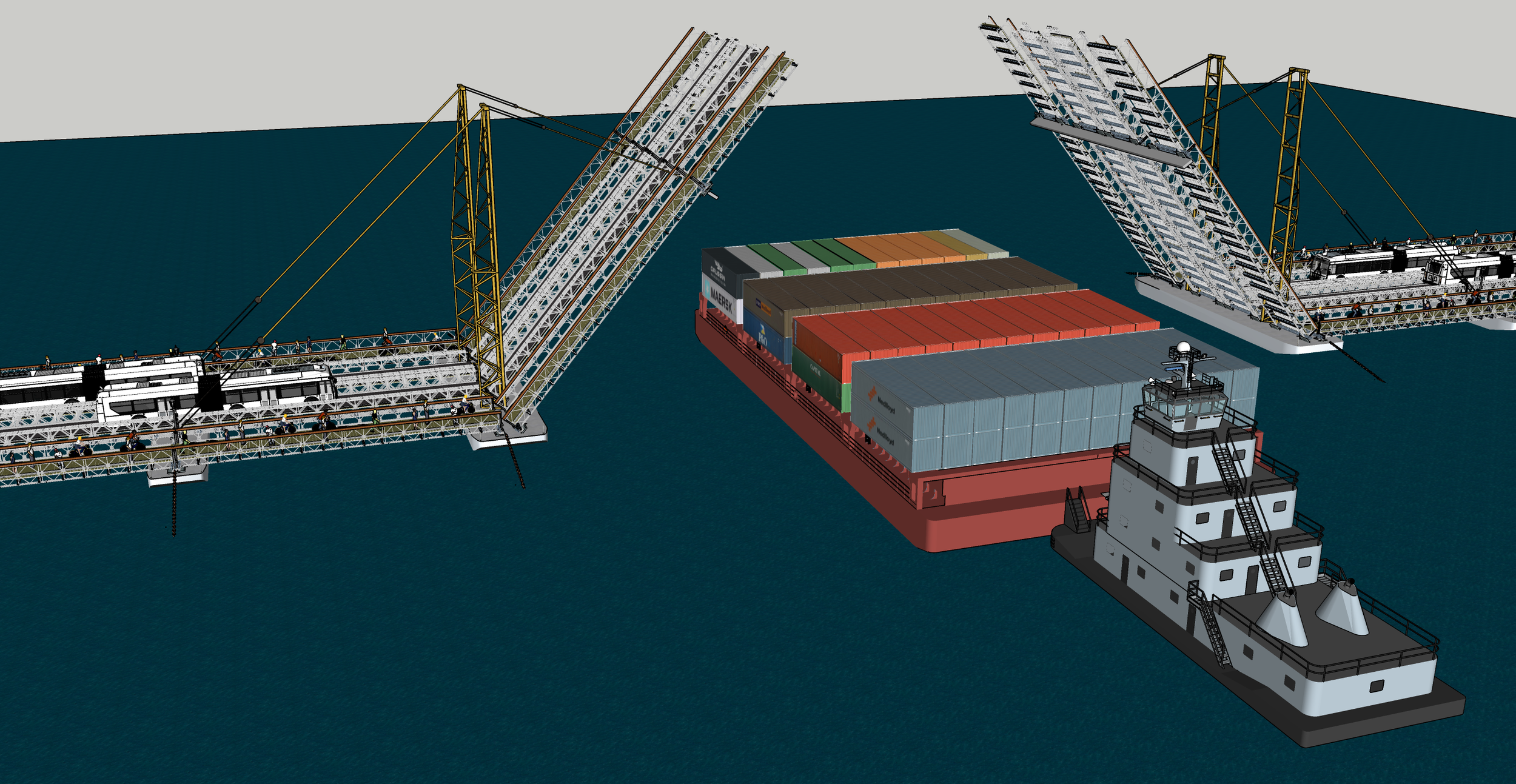
How much will it cost?
We have received multiple bids from qualified marine engineering companies and our initial projections suggest the bridge will cost approximately $60M. As a proposed line item in the New York City 2019 budget, the bridge below is very similar in design, almost twice as long, and was built by a consortium of European companies for $38M in 2008. It includes an elevated section for smaller craft to pass through (ferries and private boats), and a 230 foot wide retracting section for larger ships, similar to our design.
Elevated section for ferries and smaller boats.
This bridge is 5,150 feet long and was constructed in 2008 for $38M.
How long will it take to cross?
At 30 mph it will take approximately 1 minute and 30 seconds to go from the Bedford Avenue station to the Manhattan shoreline at 10th Street.
How do you rapidly transfer people from the subway to buses?
In order to move people as quickly as possible from the subway and into buses, a Bus Rapid Transit (BRT) station could be constructed on 7th Street between Bedford Ave and Driggs Ave. Turnstiles would remove the need for people to swipe their metro cards as they board the bus and expedite the process. This could be accomplished while still preserving sidewalk access for businesses and residences.
Brooklyn to Manhattan bus route.
What route will buses take?
Buses would enter Brooklyn via 7th Street, turn north on Driggs Ave, and then head back to Manhattan via 8th Street. Through traffic on cross streets in Brooklyn will be blocked off. In Manhattan, buses will enter onto 10th Street, turn north on Avenue C, and then turn west on 14th Street.

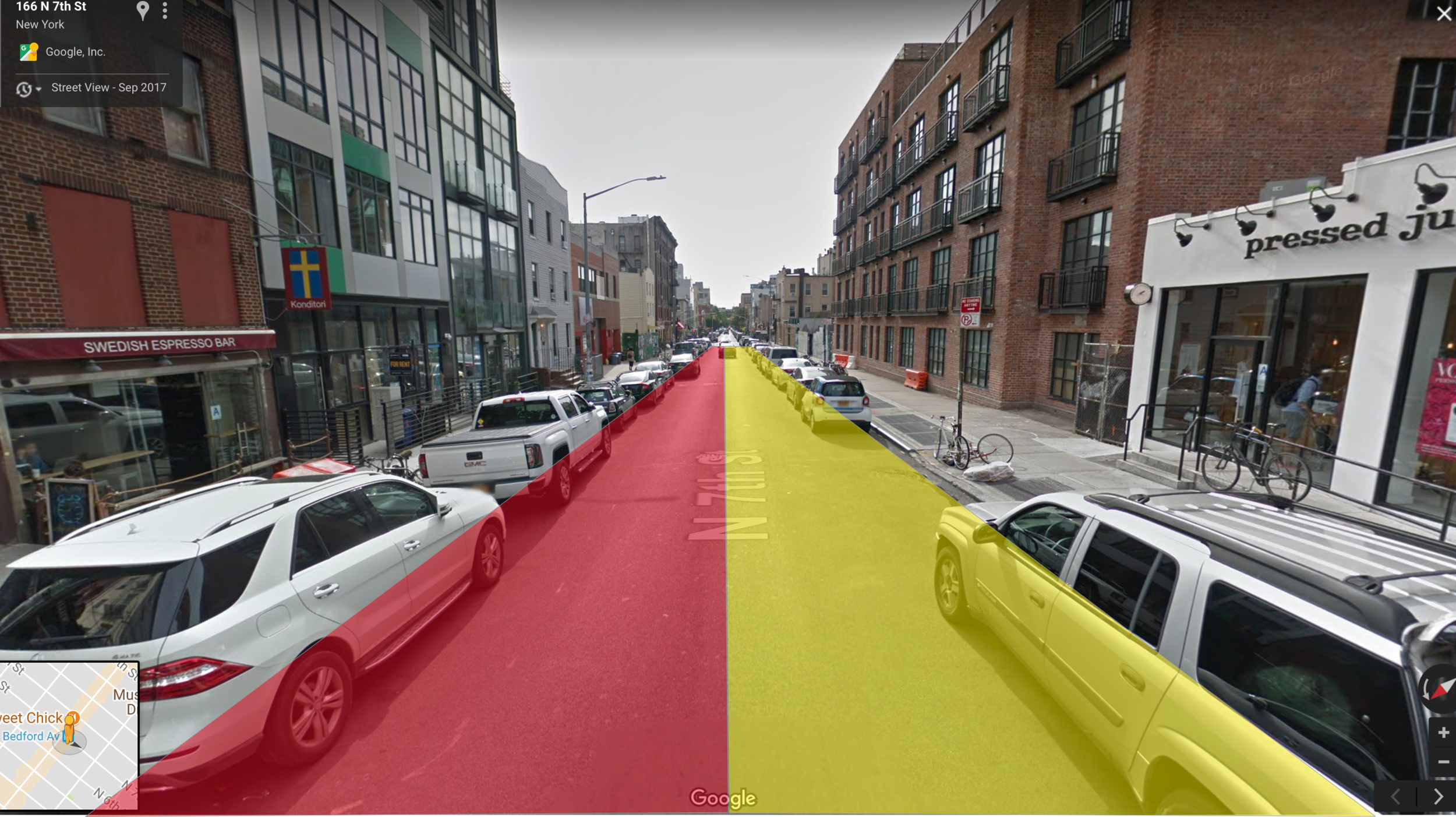
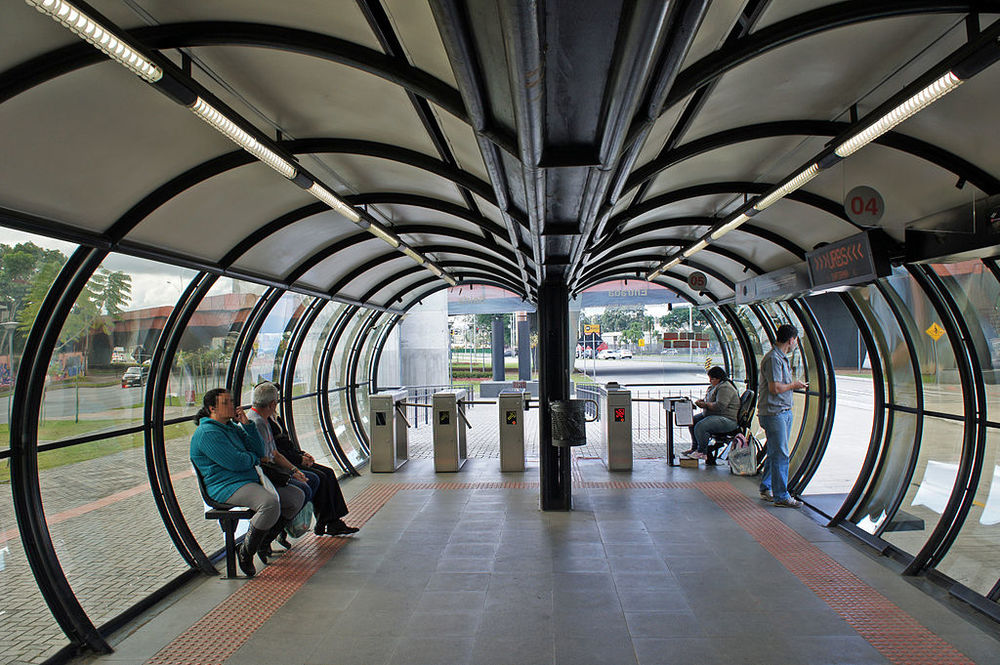
How will buses and pedestrians get across FDR drive?
A temporary overpass will be built allowing buses to pass above FDR Drive so as not to interrupt the flow of traffic. There is already an overpass in place for pedestrians on 10th Street.
How will the pontoons be made?
The pontoons will be 90-foot long purpose built deck barges. It will take 20 to span the 2,600 feet across the East River.
How will the road and walking paths be made?
The road and walking paths will be constructed using a modular steel bridge called a Bailey Bridge. These can be rapidly assembled to obtain any length due to their modular design. It was designed in WWII and is still widely used throughout the world. Hundreds of feet can be assembled per week and it doesn't require any welding or skilled labor to build.
Where will the bridge be assembled?
There are a number of potential construction locations along the north and south sides of Newton Creek. The bridge would be made in modules. Each module would be floated from the construction site into position, anchored and connected to the rest of the bridge.
How do you keep the bridge from moving?
The bridge could be anchored in place using drag embedded anchors, commonly used for offshore oil rigs.
What about shipping traffic on the east river
Section 9 of the Rivers and Harbors Act of 1899 and the General Bridge Act of 1946 placed the navigable waters of the United States under the exclusive control of the U. S. Coast Guard to prevent any interference with their navigability by bridges or other obstructions except by express permission of the United States Government. The purpose of these Acts is to preserve the public right of navigation and to prevent interference with interstate and foreign commerce.
We believe that a 240-foot wide drawbridge for larger ship traffic and a permanently elevated section for ferries and smaller boats, may provide a sufficient solution for the passage of maritime traffic. More research is necessary to validate this hypothesis. We are currently reviewing data provided by the US Coast Guard and Army Corps of Engineers.
Construction Partners
Damen Shipyards Group is a globally operating company with more than 50 shipyards, repair yards, and related companies, as well as numerous partner yards that can build vessels locally. Since 1969 it has designed and built more than 5,000 vessels and delivers up to 150 vessels annually. With over 30 shipyards and related companies worldwide, Damen is involved in ship construction as well as maintenance and repair activities.
InterMoor, an Acteon company, is the leading mooring, foundations and subsea services provider delivering innovative solutions for rig moves, mooring services and offshore installation project. InterMoor supports operators and contractors worldwide with our engineering, fabrication, shore base and survey and positioning services to truly provide customized solutions.
Mabey is a leading international bridge and engineering services specialist combining engineering excellence with expert design and manufacturing skills. We help our customers deliver construction and infrastructure projects more quickly, safely and efficiently across the road, rail, utilities and construction sectors. Our engineering capabilities include designing, manufacturing and constructing bridges; structural monitoring; designing and installing temporary works including excavation shoring, structural shoring and jacking.








